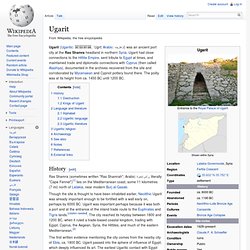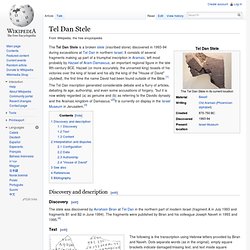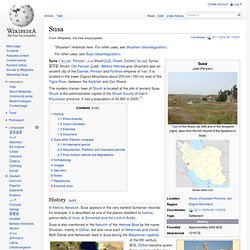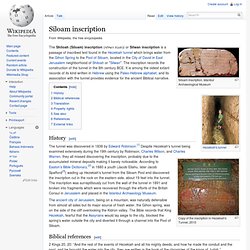

Pool of Bethesda. Western Wall. The Western Wall, Wailing Wall or Kotel (Hebrew: It has been a site for Jewish prayer and pilgrimage for centuries; the earliest source mentioning Jewish attachment to the site dates back to the 4th century.

From the mid-19th century onwards, attempts to purchase rights to the wall and its immediate area were made by various Jews, but none was successful. Warren's Shaft. Warren's shaft.

Warren's Shaft is an archaeological feature in Jerusalem discovered in 1867 by British engineer Sir Charles Warren (1840–1927). It runs from within the old city to a spot near the Gihon Spring, and after its 19th-century discovery was thought to have been the centrepiece of the city's early water supply system, since it would have enabled the city's occupants to safely reach fresh water in times of siege. In 2005, archeologists discovered the ruins of a pair of walls that would have protected the overland path to the spring prior to the tunnel's construction. The narrow and tall shaft was demonstrated to be traversable when a member of Warren's excavation climbed from top to base. Uzziah. Uzziah (/əˈzaɪə/; Hebrew: עֻזִּיָּהוּ, meaning Yahweh is my strength;[1] Greek: Οζίας; Latin: Ozias), also known as Azariah (/ˈæzəˈraɪə/; Hebrew: עֲזַרְיָה Greek: Αζαρις; Latin: Azarias), was a king of the ancient Kingdom of Judah, and one of Amaziah's sons, whom the people appointed to replace his father; 2 Chronicles 26:1).

(According to James F. Drsicoll, the second form of his name most likely results from a copyist's error.)[1] He is one of the kings mentioned in the genealogy of Jesus in the Gospel of Matthew. Uzziah was sixteen when he became king of Judah and reigned for fifty-two years. William F. Albright has dated his reign to 783 – 742 BC. Biblical Account[edit] Then his pride led to his downfall. Uzziah was suddenly struck with tzaraat while in the act of offering incense (2 Chronicles 26:19-21), and he was driven from the Temple and compelled to reside in "a separate house" until his death (2 Kings 15:5, 27; 2 Chronicles 26:3).
Uzziah Tablet[edit] Ugarit. Excavated ruins at Ras Shamra Ugarit (Ugaritic: 𐎜𐎂𐎗𐎚, ʼUgrt; Arabic: أوغاريت) was an ancient port city at the Ras Shamra headland in northern Syria.

Ugarit had close connections to the Hittite Empire, sent tribute to Egypt at times, and maintained trade and diplomatic connections with Cyprus (then called Alashiya), documented in the archives recovered from the site and corroborated by Mycenaean and Cypriot pottery found there. The polity was at its height from ca. 1450 BC until 1200 BC. History[edit] Ras Shamra (sometimes written "Ras Shamrah"; Arabic: رأس شمرة, literally "Cape Fennel")[1] lies on the Mediterranean coast, some 11 kilometres (7 mi) north of Latakia, near modern Burj al-Qasab. Though the site is thought to have been inhabited earlier, Neolithic Ugarit was already important enough to be fortified with a wall early on, perhaps by 6000 BC. Tel Dan Stele. The Tel Dan Stele is a broken stele (inscribed stone) discovered in 1993-94 during excavations at Tel Dan in northern Israel.

It consists of several fragments making up part of a triumphal inscription in Aramaic, left most probably by Hazael of Aram-Damascus, an important regional figure in the late 9th-century BCE. Hazael (or more accurately, the unnamed king) boasts of his victories over the king of Israel and his ally the king of the "House of David" (bytdwd), the first time the name David had been found outside of the Bible. The Tel Dan inscription generated considerable debate and a flurry of articles, debating its age, authorship, and even some accusations of forgery, "but it is now widely regarded (a) as genuine and (b) as referring to the Davidic dynasty and the Aramaic kingdom of Damascus. "It is currently on display in the Israel Museum in Jerusalem.[3] Discovery and description[edit]
Taylor and Sennacherib Prisms. Sennacherib's Annals are the annals of the Assyrian king Sennacherib.

They are found inscribed on a number of artifacts, and the final versions were found in three clay prisms inscribed with the same text: the Taylor Prism is in the British Museum, the Oriental Institute Prism in the Oriental Institute of Chicago, and the Jerusalem Prism is in the Israel Museum in Jerusalem. The Taylor Prism is one of the earliest cuneiform artefacts analysed in modern Assyriology, having been found a few years prior to the modern deciphering of cuneiform.
The annals themselves are notable for describing his siege of Jerusalem during the reign of king Hezekiah. This event is recorded in several books contained in the Bible including Isaiah chapters 33 and 36; 2 Kings 18:17; 2 Chronicles 32:9. Susa. Susa (/ˈsuːsə/; Persian: شوش Shush [ʃuʃ]; Greek: Σοῦσα [ˈsuːsa]; Syriac: ܫܘܫ Shush; Old Persian Çūšā-; Biblical Hebrew שׁוּשָׁן Shushān) was an ancient city of the Elamite, Persian and Parthian empires of Iran.

It is located in the lower Zagros Mountains about 250 km (160 mi) east of the Tigris River, between the Karkheh and Dez Rivers. The modern Iranian town of Shush is located at the site of ancient Susa. Shush is the administrative capital of the Shush County of Iran's Khuzestan province. It had a population of 64,960 in 2005.[1] History[edit] Stepped Stone Structure. The structure The Stepped Stone Structure is the name given to the remains at a particular archaeological site (sometimes termed Area G) on the eastern side of the City of David, the oldest part of Jerusalem.

The curved, 60ft high, narrow stone structure is built over a series of terraces (hence the name). A casemate wall adjoins the structure from a northerly direction at the upper levels, and may have been the original city wall. It was uncovered during a series of excavations by R.A.S. Stele of Zakkur. Siloam inscription. Siloam Inscription, Istanbul Archaeological Museum Copy of the inscription in Hezekiah's Tunnel, 2010.

Shishaq Relief. Coordinates: The temple wall depicts a list of city states conquered by Shoshenq I in his Near Eastern military campaigns.

Shiphrah. Shiphrah (Hebrew: שִׁפְרָה šiᵽrâ) was one of two midwives who helped prevent the genocide of Hebrew children by the Egyptians, according to Exodus 1:15-21. The name is found in a list of slaves in Egypt during the reign of Sobekhotep III. This list is on Brooklyn 35.1446, a papyrus scroll kept in the Brooklyn Museum. The name is written šp-ra and means "to be fair" or "beautiful". Shebna. Shebna (Hebrew: שֶׁבְנָא, Modern Shevna Tiberian Šeḇnā ; "tender youth") was "treasurer over the house" (meaning comptroller or governor of the palace) in the reign of king Hezekiah of Judah, according to the Old Testament.
Shebna may or may not have been "Shebna the scribe", who was sent by the king to confer with the Assyrian ambassador recorded in the (2 Kings 18:18, 26, 37; 19:2; Isa. 36:3, 11, 22; 37:2). Tomb and inscription[edit] Sefire steles. The Sfire or Sefire steles are three 8th-century BCE basalt stelae containing Aramaic inscriptions discovered at Al-Safirah ("Sfire") near Aleppo, Syria.[1] The Sefire treaty inscriptions are the three inscriptions on the steles.[2] Identification of the treaty kings[edit] Description of the inscriptions[edit] Sefire I[edit] This is a basalt slab broken in two horizontally.
The first two steles each have three faces bearing writing. Sefire II[edit] Jehucal. Jehucal or Jucal [heb. Pim weight. Pim weight, a polished stone about 15 mm (5/8 inch) diameter, equal to about two-thirds of a Hebrew shekel. Many specimens have been found since their initial discovery early in the 20th century, and each one weighs about 7.6 grams compared to 11.5 grams of a shekel. Ostraca House. The Samaria Ostraca are 64 legible ostraca which were found in Samaria. Military history of the Neo-Assyrian Empire. Adad Nirari II brought Assyria out of servitude and waged war upon her enemies, succeeded in driving foreigners out of Assyria's heartland.[3] Assyria originated in the 23rd century BC, its earliest king Tudiya being a contemporary of Ibrium of Ebla.[3][4] It evolved from the Akkadian Empire of the late 3rd millennium BC.[5] Assyria was a strong nation under the rule of Ilushuma (1945–1906 BC), who founded colonies in Asia Minor and raided Isin and other Sumero-Akkadian states in southern Mesopotamia.
Under Shamshi-Adad I (1813–1791 BC) and his successor Ishme-Dagan (1790–1754 BC), Assyria was the seat of a regional empire controlling northern Mesopotamia and regions in Asia Minor and northern Syria. From 1365 to 1076 BC, Assyria became a major empire and world power, rivalling Egypt. Nebo-Sarsekim Tablet. Nebo-Sarsekim Tablet is a clay cuneiform inscription referring to an official at the court of Nebuchadrezzar II, king of Babylon. Ketef Hinnom. Ketef Hinnom (Hebrew: כָּתֵף הִינוֹם katef hinom, "shoulder of Hinnom") is an archaeological site southwest of the Old City of Jerusalem, adjacent to St. Nabonidus Chronicle. Midianite pottery. Midianite pottery, also known as “Qurayya ware” [1] is a ware type found in the Hejaz (northwestern Saudi Arabia), southern and central Jordan, southern Israel and the Sinai, generally dated to the 13th-12th centuries BCE, although later dates are also possible.
Mesha Stele. Merneptah Stele. LMLK seal. LMLK jar-handle stamps with LMLK postage stamps. List of New Testament papyri. List of ancient legal codes. Large Stone Structure. Siege of Lachish. Lachish Letters City of Lachish. Kurkh Monolith. Khirbet Qeiyafa. First Impression: What We Learn from King Ahaz’s Seal (#m1) < Monographs < Archaeological Center. Judaea Capta coinage. Jehoiachin's Rations Tablets.
Ipuwer Papyrus. Hittite texts. Hezekiah's Tunnel. Second Temple. Herodian architecture. Hasmonean coinage. Goliath. Gezer calendar. Foundation Stone. Erastus Insciption. Ekron Inscription. Epic of Gilgamesh. Elephantine papyri. Cylinder of Nabonidus. Cyrus Cylinder. Code of Hammurabi. Cave of the Patriarchs. Shaphan. Bubastis Portal. Black Obelisk of Shalmaneser III. Deir Alla Inscription. Babylonian Chronicles. Arch of Titus. Amman Citadel Inscription. Amarna letters. Ark of the Covenant.